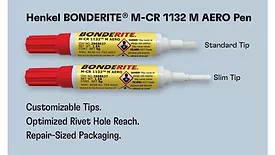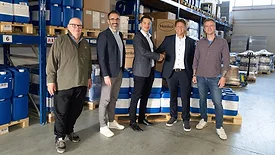Home » Keywords: » adhesives in aerospace
Items Tagged with 'adhesives in aerospace'
ARTICLES
Paste Adhesives for Bonding in Aerospace Applications
The elements required for aircraft bonding include strength and durability, fatigue and corrosion resistance, and manufacturing flexibility.
August 19, 2024
Rheology Control: Novel Use of Pyrogenic Fumed Silica in Wind Turbine Adhesives
The pronounced thixotropy and shear-thinning effect provided by pyrogenic fumed silica allows easy processing of adhesive components even at high silica loading levels.
August 16, 2024
Keep the info flowing with our newsletters!
Get the latest industry updates tailored your way.
JOIN TODAY!Copyright ©2025. All Rights Reserved BNP Media.
Design, CMS, Hosting & Web Development :: ePublishing







-and-129-50LS-2_780x439.webp?height=168&t=1729515413&width=275)
.webp?height=168&t=1709670950&width=275)

